Abstract
1. The superposition of records of `instantaneous' frequency of discharge of spindle primary endings after stimulation of single fusimotor fibres leads to the construction of graphs called `frequencygrams'.
2. The superposition is made on the screen of a storage oscilloscope, the time base of which is synchronized with the stimulus. It is essential that the stimulus be delivered at all possible intervals with respect to the impulse of the resting discharge which precedes it.
3. Frequencygrams obtained by stimulating some static fusimotor fibres by single stimuli display a response with a fast rising phase, a pause, and a slower decreasing phase.
4. Frequencygrams may give some information on the time course of the contraction of intrafusal muscle fibres elicited by stimulating their motor axons.
Full text
PDF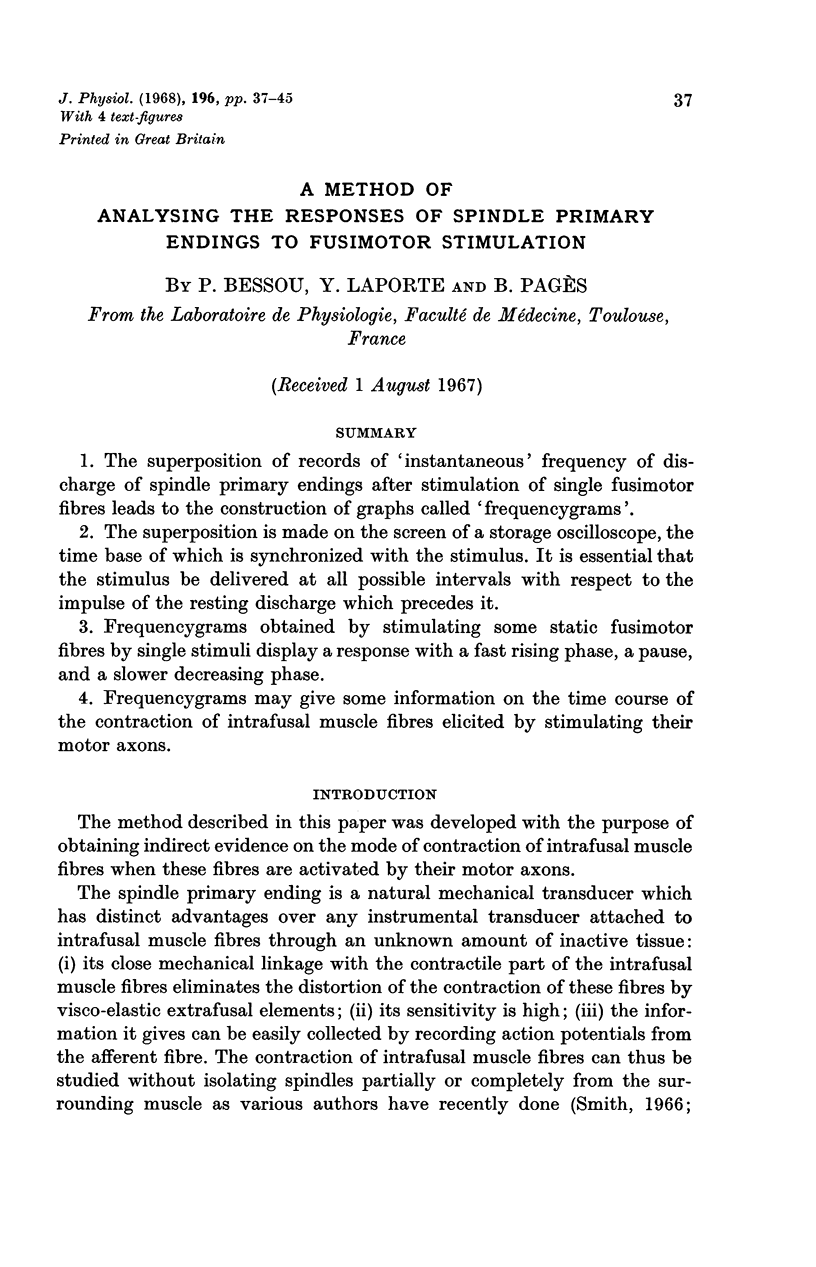
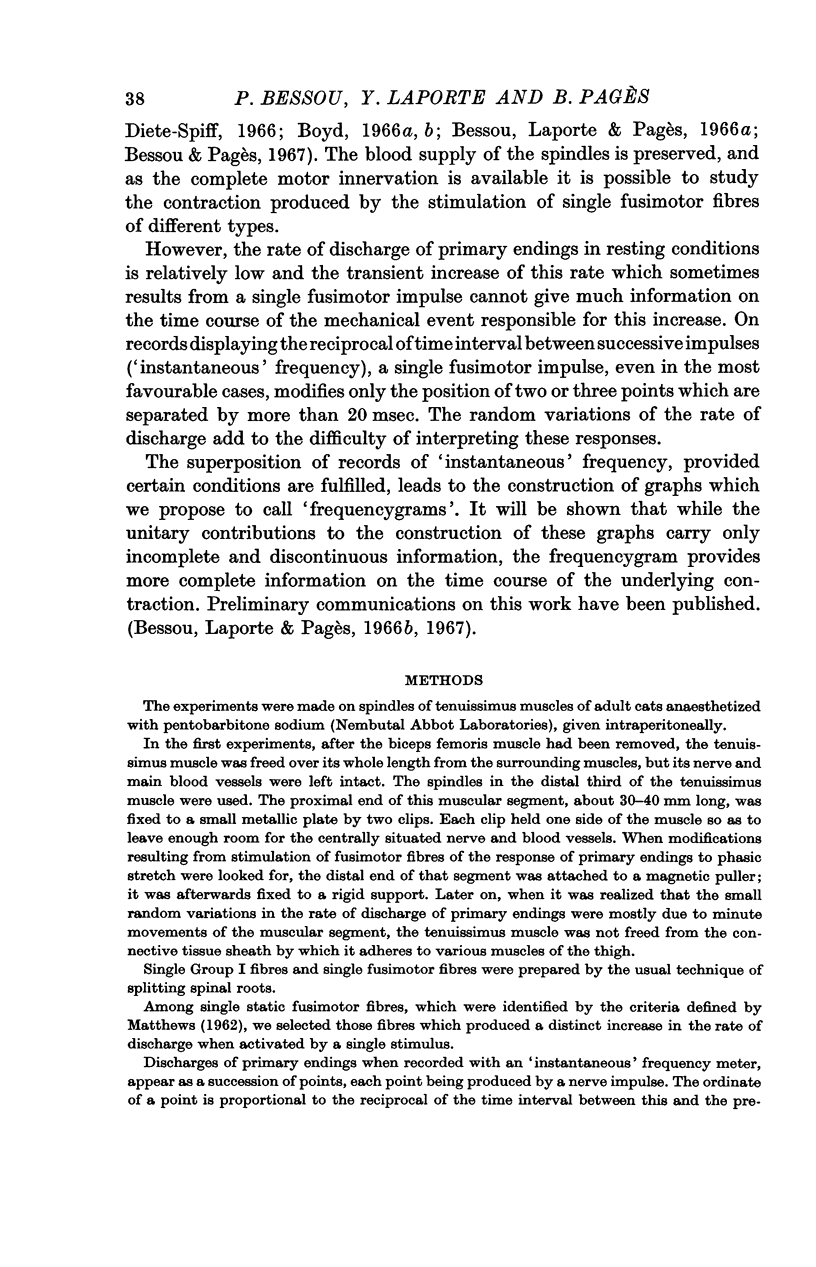
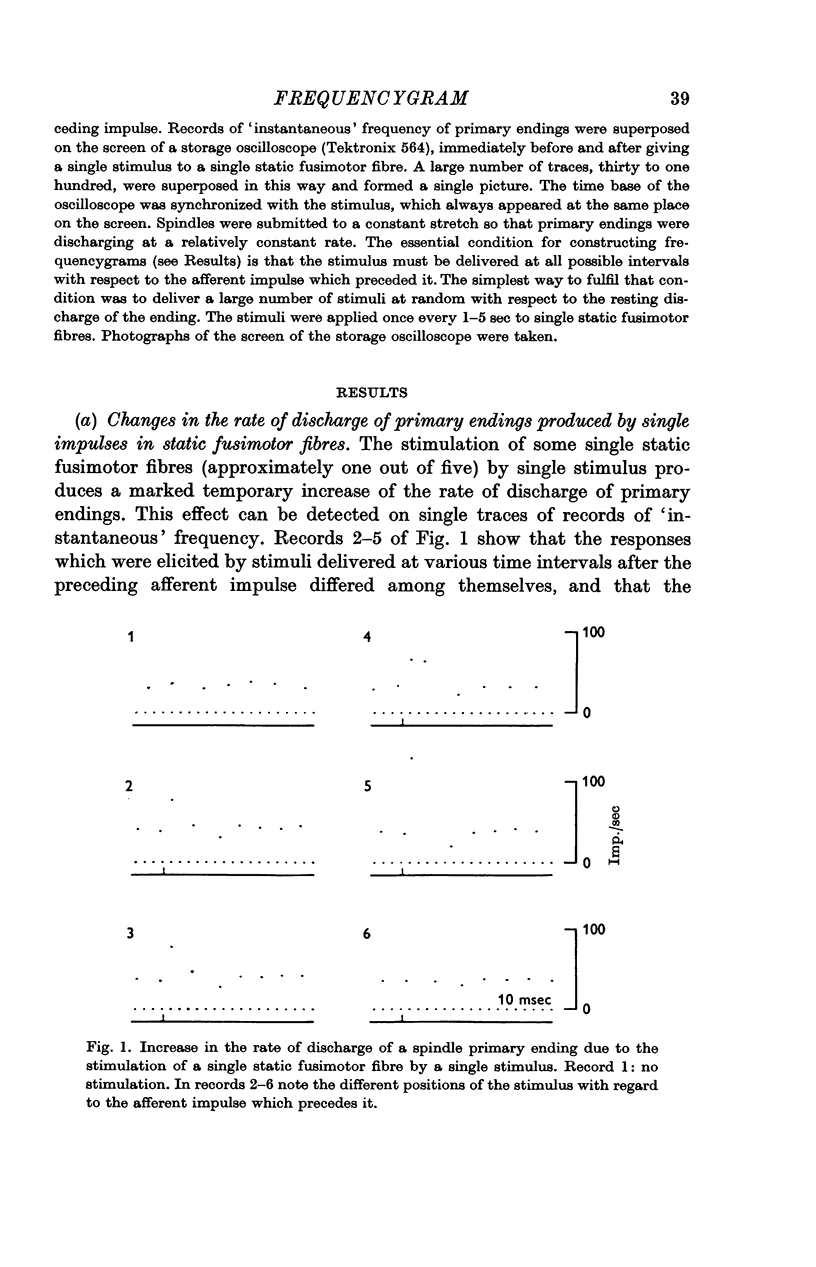
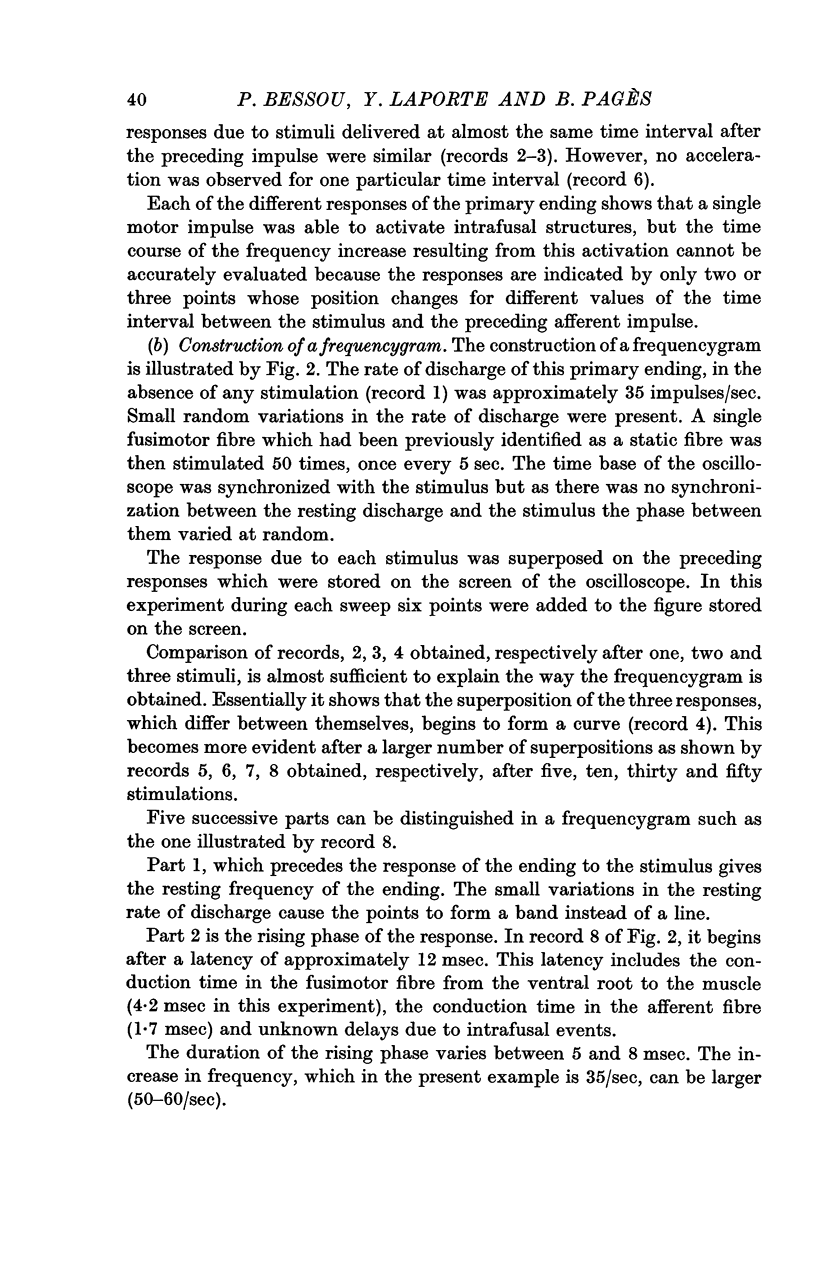
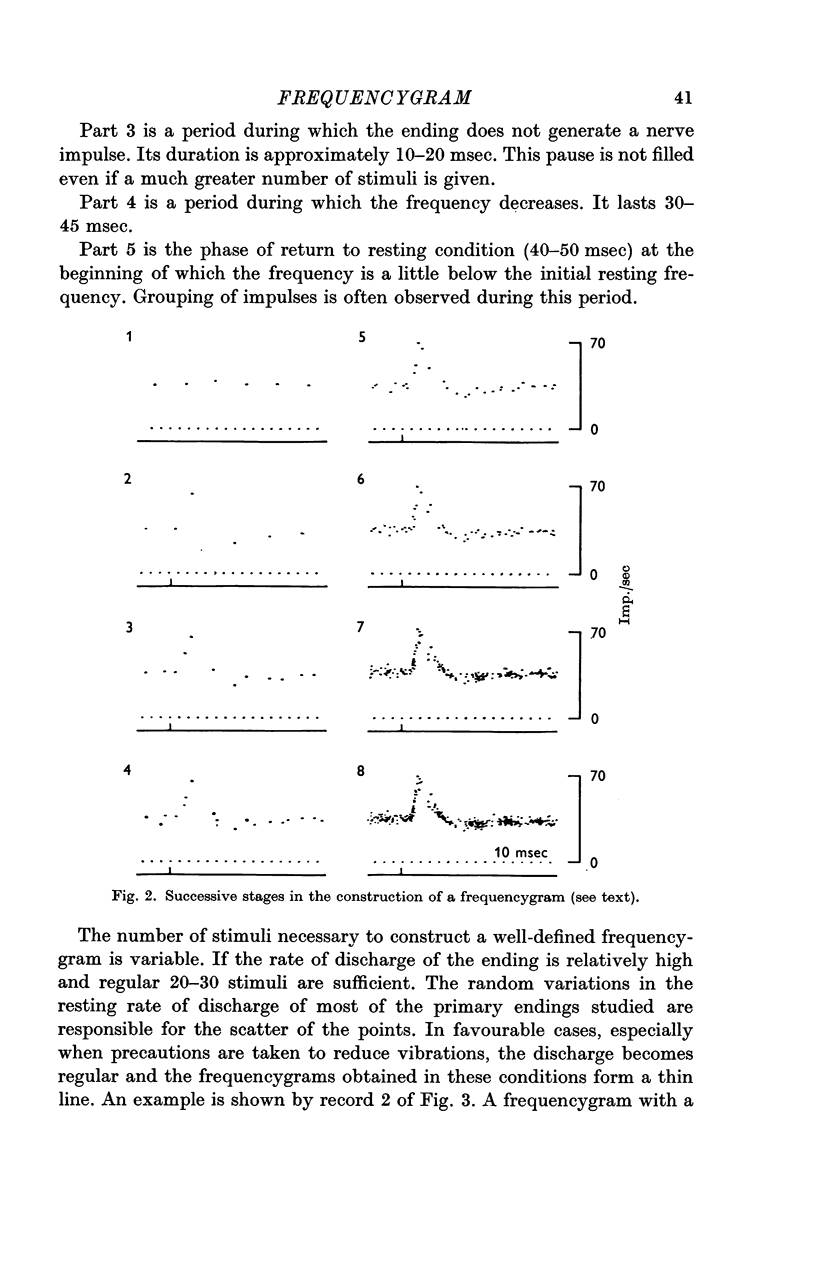
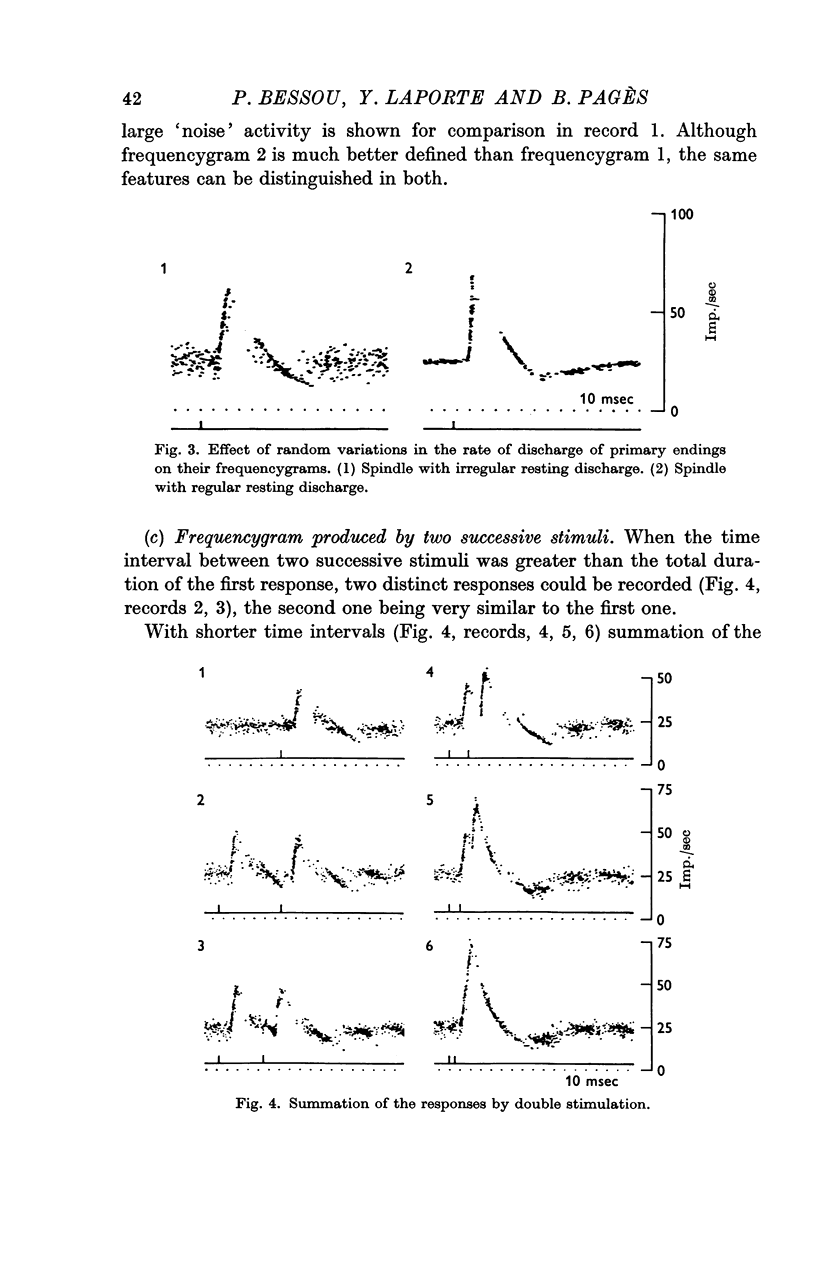
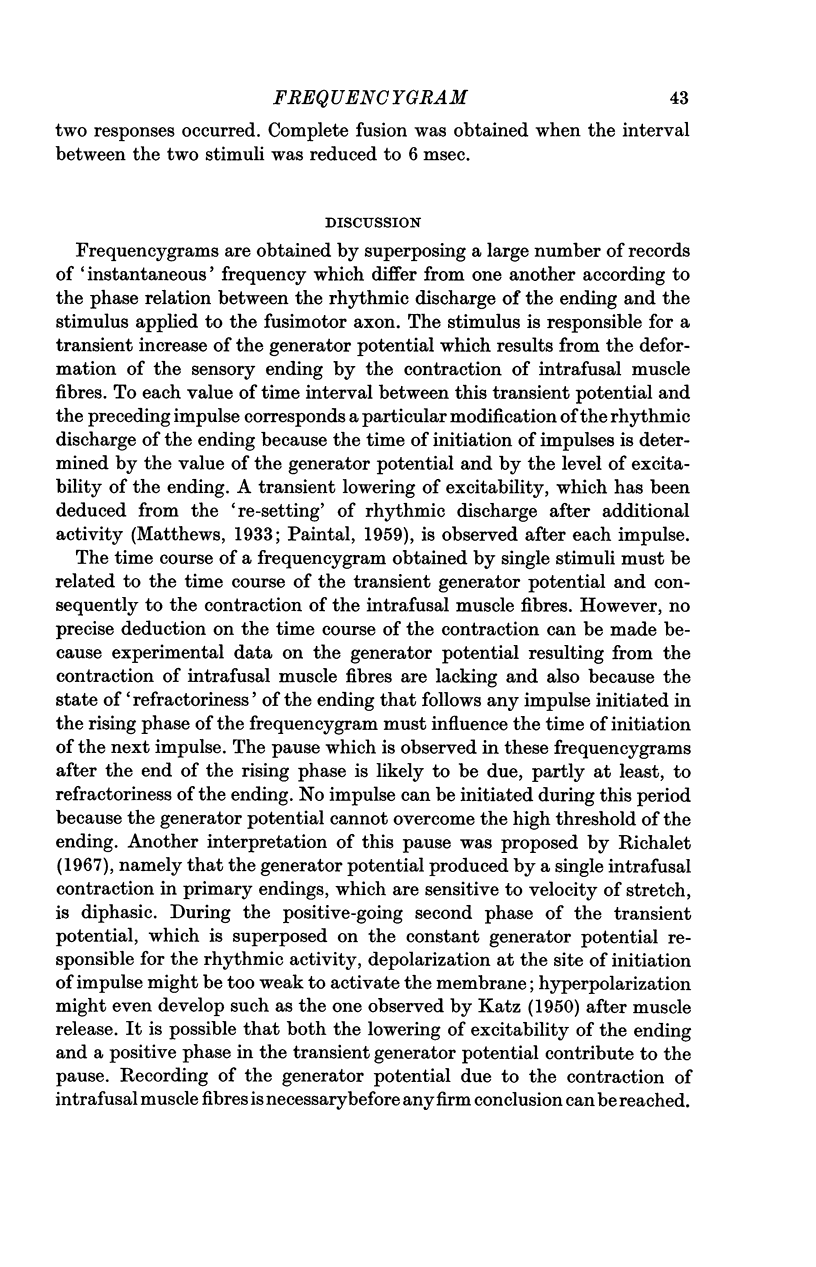
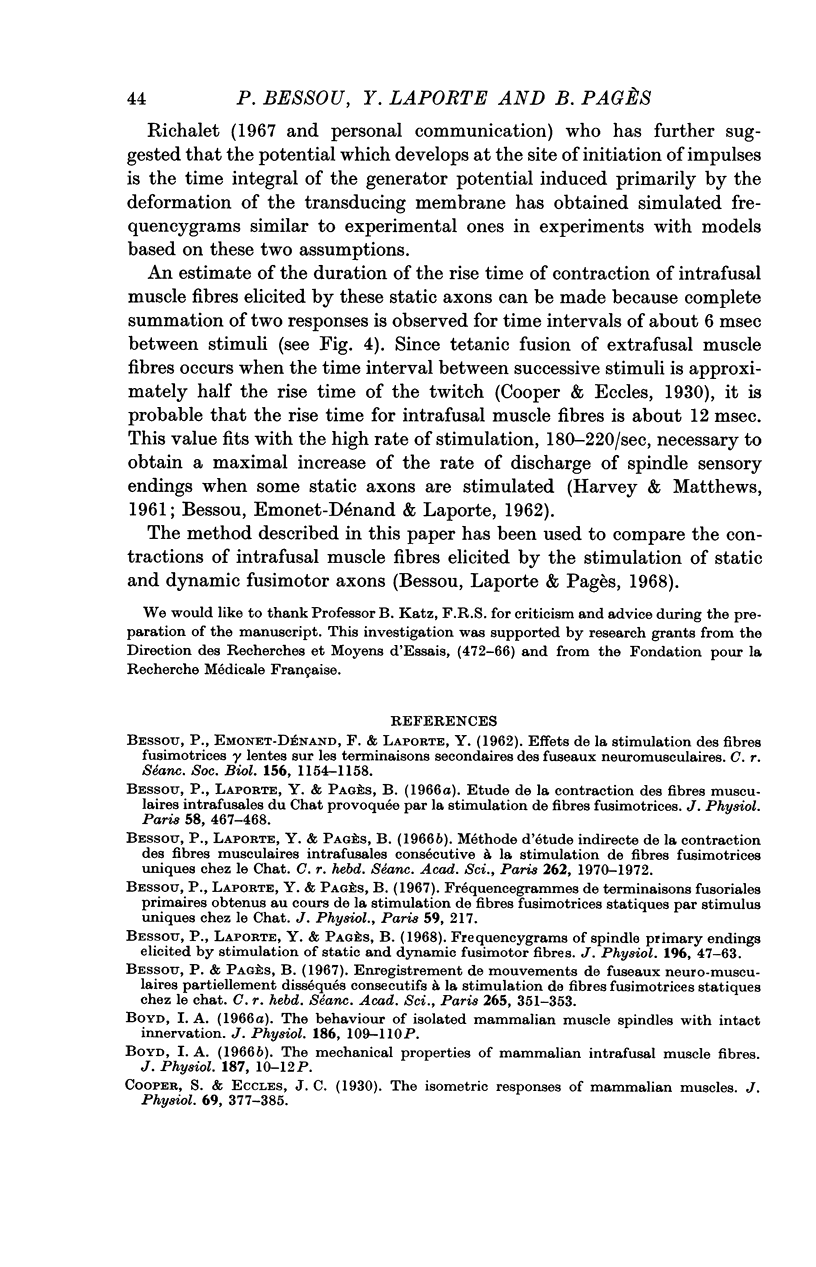
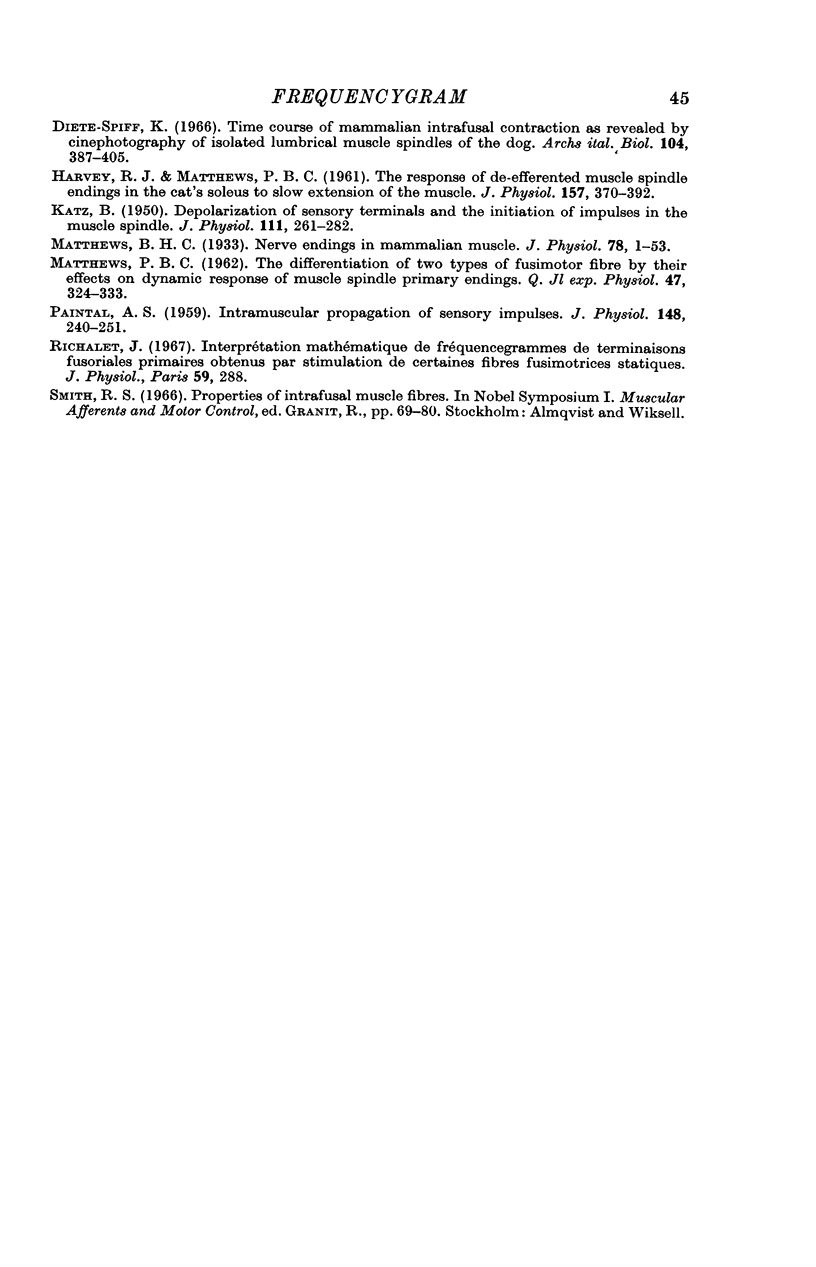
Selected References
These references are in PubMed. This may not be the complete list of references from this article.
- Bessou P., Laporte Y., Pagès B. Frequencygrams of spindle primary endings elicited by stimulation of static and dynamic fusimotor fibres. J Physiol. 1968 May;196(1):47–63. doi: 10.1113/jphysiol.1968.sp008493. [DOI] [PMC free article] [PubMed] [Google Scholar]
- Bessou P., Laporte Y., Pagès B. Fréquencegrammes de terminaisons fusoriales primaires obtenus au cours de la stimulation de fibres fusimotrices statiques par stimulus uniques, chez le chat. J Physiol (Paris) 1967;59(1 Suppl):217–217. [PubMed] [Google Scholar]
- Bessou P., Laporte Y., Pagès B. Méthode d'étude indirecte de la contraction des fibres musculaires intrafusales consécutive à la stimulation de fibres fusimotrices uniques chez le chat. C R Acad Sci Hebd Seances Acad Sci D. 1966 May 2;262(18):1970–1972. [PubMed] [Google Scholar]
- Bessou P., Pagès B. Enregistrement de mouvements de fuseaux neuromusculaires partiellement disséqués consécutifs à la stimulation de fibres fusimotrices statiques chez le chat. C R Acad Sci Hebd Seances Acad Sci D. 1967 Jul 24;265(4):351–353. [PubMed] [Google Scholar]
- Cooper S. The isometric responses of mammalian muscles. J Physiol. 1930 Jun 27;69(4):377–385. doi: 10.1113/jphysiol.1930.sp002657. [DOI] [PMC free article] [PubMed] [Google Scholar]
- HARVEY R. J., MATTHEWS P. B. The response of de-efferented muscle spindle endings in the cat's soleus to slow extension of the muscle. J Physiol. 1961 Jul;157:370–392. doi: 10.1113/jphysiol.1961.sp006729. [DOI] [PMC free article] [PubMed] [Google Scholar]
- KATZ B. Depolarization of sensory terminals and the initiation of impulses in the muscle spindle. J Physiol. 1950 Oct 16;111(3-4):261–282. doi: 10.1113/jphysiol.1950.sp004479. [DOI] [PMC free article] [PubMed] [Google Scholar]
- MATTHEWS P. B. The differentiation of two types of fusimotor fibre by their effects on the dynamic response of muscle spindle primary endings. Q J Exp Physiol Cogn Med Sci. 1962 Oct;47:324–333. doi: 10.1113/expphysiol.1962.sp001616. [DOI] [PubMed] [Google Scholar]
- Matthews B. H. Nerve endings in mammalian muscle. J Physiol. 1933 Apr 13;78(1):1–53. doi: 10.1113/jphysiol.1933.sp002984. [DOI] [PMC free article] [PubMed] [Google Scholar]
- PAINTAL A. S. Intramuscular propagation of sensory impulses. J Physiol. 1959 Oct;148:240–251. doi: 10.1113/jphysiol.1959.sp006285. [DOI] [PMC free article] [PubMed] [Google Scholar]
- Richalet J. Interprétation mathématique de fréquencegrammes de terminaisons fusorialses primaires obtenues par stimulation de certaines fibres fusimotrices statiques. J Physiol (Paris) 1967;59(1 Suppl):288–288. [PubMed] [Google Scholar]


